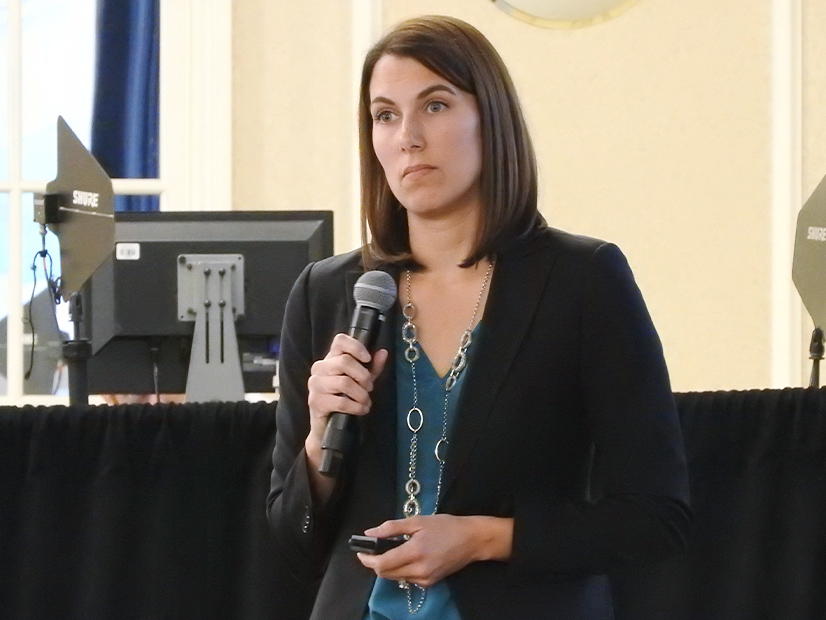The Reserve Certainty Senior Task Force (RCSTF) is considering two proposals from PJM and the Independent Market Monitor aimed at improving the performance of reserve resources.
Stakeholders have been tackling reserve performance since the response rate for committed resources has fallen after a market redesign consolidated the Tier 1 and 2 synchronized reserve products and lowered the offer cap from $7.50/MWh to 2 cents. (See “Stakeholders Reject PJM Synch Reserve Manual Change; RTO Overrides,” PJM MRC/MC Briefs: May 31, 2023.)
The PJM package would allow operators to modify the procurement targets for 30-minute reserves without having to do so for synchronized and primary reserves and create a formula for dynamically changing the 30-minute reliability requirement, PJM’s Emily Barrett told the RCSTF during its April 17 meeting. The calculation would use the larger of the primary reserve requirement, the largest active gas contingency and the average load forecast error, plus the average forced outage rate. The requirement is set at 3,000 MW, which was double the largest contingency when the requirement was established.
The changes would align the 30-minute reserve requirement with the breadth of operational risks dispatchers face and would grant flexibility to increase those reserves during periods of increased risks, such as harsh weather conditions, Barrett said.
PJM’s Lisa Morelli said staff will draft manual language and more details to present to stakeholders for a potential first read during the May 15 RCSTF meeting, with the intention of holding a vote June 12.
Monitor Focuses on Communications
The Monitor’s proposal would focus on getting reserve dispatch signals to generators in a manner that they can act on as quickly as possible. Joel Luna, of Monitoring Analytics, said the Monitor and PJM have been speaking with generation owners about the root causes of poor reserve performance since last spring and found that lags in communication can lead to generators not initiating their response until minutes after PJM has begun a reserve deployment.
Pointing to a synchronized reserve event Feb. 24, 2024, Luna said about 61% of the 1,882 MW resources deployed did not meet their assignment, of which he said 1,041 MW underperformed due to communication issues. Some units were waiting for a phone call from PJM to confirm their deployment. Others experienced lag between when the all-call signal was initiated by PJM and when it was received on their end due to how those generation owners relay signals between their control centers. And some experienced lag from the required switch to manual ramp from automatic dispatch signal.
The Monitor’s proposal would replace all phone communications used to convey deployment orders with automatic electronic signals and would include the deployment MW generators are being assigned through the existing security constrained economic dispatch (SCED) signals.
Paul Sotkiewicz, president of E-Cubed Policy Associates, said many generators are being asked to run at a loss when providing reserves and compensation needs to be addressed alongside the communication issues.
“Prices need to reflect the system conditions, and clearly that’s not the case here,” he said.
Tom Hyzinski of the GT Power Group said adopting the Monitor’s recommendations could resolve some of the issues in the reserve market and clear the air to simplify addressing any remaining design issues. So long as all other options remain on the table should the proposal be endorsed, he argued there are no downsides to advancing the Monitor’s changes.



